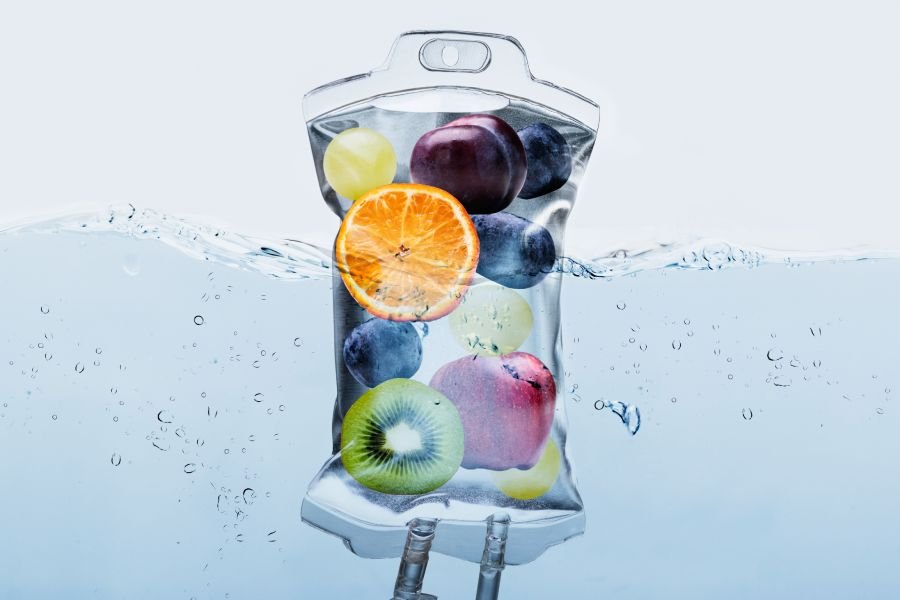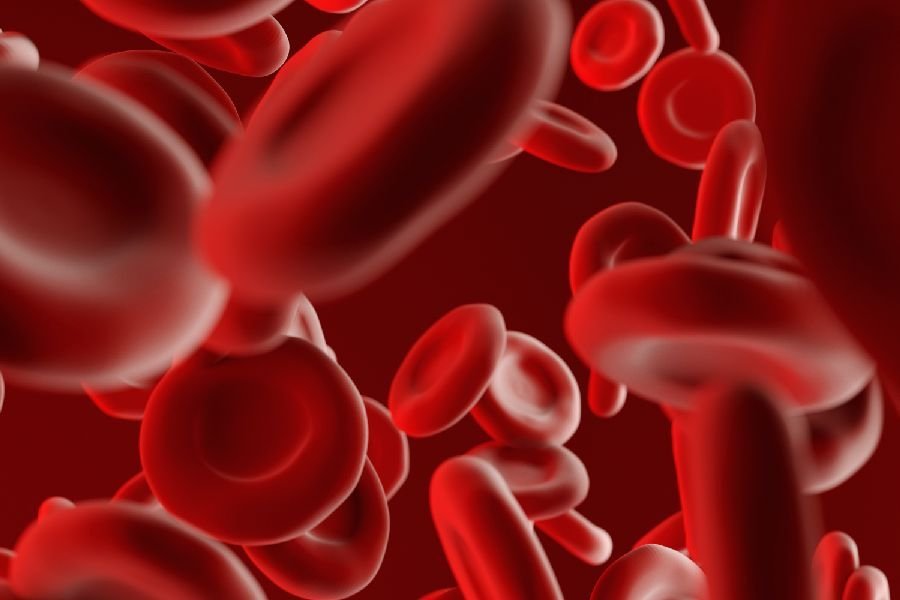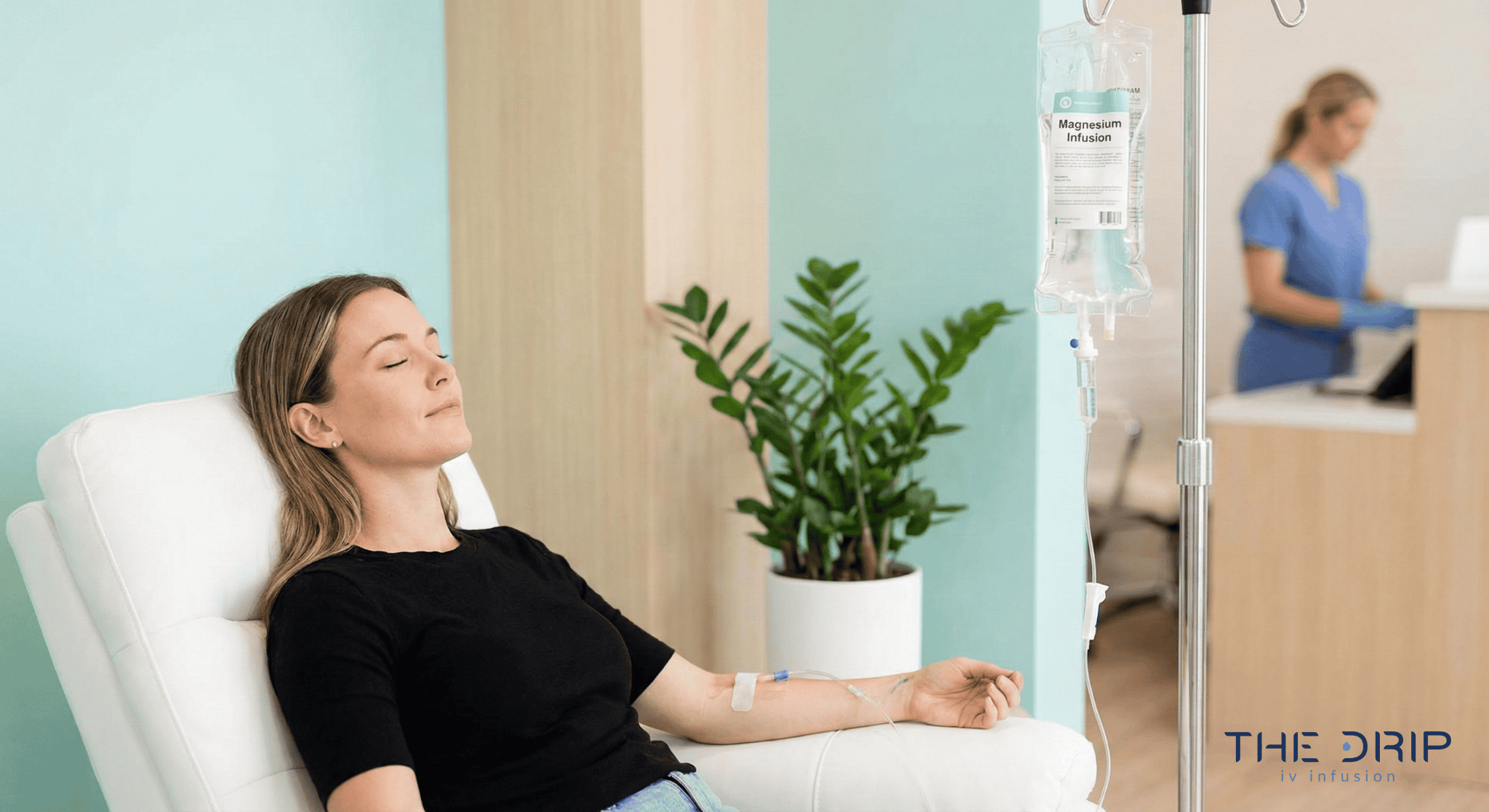Intravenous therapy is an old medical technique with different purposes for the human body. In the past, IV therapy was mainly used in hospitals. Nowadays, this medical procedure might be done even in the comfort of your own home. Plus, it is getting more and more popular. If you wonder what is IV therapy used for, this is the article you need to learn more about this topic.
This comprehensive post will explore the uses and types of IV therapy. It’ll also explain the advantages and disadvantages of using IV therapy.
Let’s dive in!
What Is IV Therapy Used For?
IV therapy, also known as intravenous therapy, is a medical technique that includes the administration of fluids, medications, or nutrients directly into the veins. This is the fastest way to administer medication. IV bypasses the digestive system and goes into the bloodstream for immediate absorption. You can receive IV therapy through an injection with a syringe or an infusion, called a drip.
The purpose of IV therapy can vary depending on the patient’s condition and the specific treatment goals. The main uses of IV therapy are:
Rehydration
Nutritional support
Medication delivery
Blood transfusions
Chronic disease management
Immune support
Hangover relief
Athletic performance and recovery
Pain management
Antiemetic therapy
Rehydration
IV therapy may treat severe dehydration by delivering fluids. So, rehydration is one of the primary uses of this therapy. IV therapy is among the essential options when people are dehydrated or unable to take fluids orally. IV fluids may quickly hydrate the body.
A person can dehydrate because of sweating, diarrhea, vomiting, or different medical conditions. IV fluids contain electrolytes, sodium, potassium, chloride, and water. This combination ensures the body receives the nutrients necessary to restore fluid balance.

Source: shutterstock.com/ Photo Contributor: Andrey_Popov
Nutritional support
Among the common uses of IV infusion is the use for nutritional support. IV therapy is needed in cases of malnutrition or if the patient is unable to take food orally. IV treatment provides essential vitamins, minerals, and amino acids directly into the bloodstream.
This method is used when patients have severe malnutrition, gastrointestinal disorders, or after surgery or illness. The good news is that IV nutritional support can be customized to meet a patient’s needs.
Medical uses of IV therapy
IV therapy has a fundamental role in delivering medications quickly and effectively. This is especially used in emergency situations. IV therapy is important because, in these cases, doctors do not have to worry about potential issues related to poor absorption or dosing. This method ensures rapid absorption and precise dosing.
IV medications may be used for infections, pain management, chemotherapy, and more.
Blood transfusions
Among the essential applications of IV therapy is blood transfusion. When a patient goes through severe blood loss due to trauma, surgery, or another medical condition, receiving blood products through IV therapy might be lifesaving. IV therapy ensures fast and efficient delivery of blood components to restore lost blood quantity. Your body needs to restore lost blood to function properly.
Blood transfusion nowadays may come in different ways, like red blood cells for restoring oxygen, plasma for clotting, or platelets to promote clot formation.
Chronic disease management
One utilization of IV therapy is long-term disease management. IV therapy is especially used for chronic conditions that require continuous medication administration. For example, patients with cancer or autoimmune diseases may need regular applications of intravenous therapy. This approach may improve the overall quality of life.
Immune support
In the past years, IV therapy for immune support has gained popularity. Some people decide to infuse high-dose vitamins and minerals into the bloodstream to enhance immune function. Although the number of scientific research claiming this is limited, some decide to include vitamin IV infusions in their health routine.
Hangover relief
IV therapy, among other uses, may also relieve hangover symptoms. This is due to the fast absorption of fluids, electrolytes, and essential nutrients. IV therapy may help you restore balance in the body and alleviate symptoms like headache, nausea, fatigue, and dehydration.
Athletic purposes
IV therapy has become popular among athletes in recent years. IV therapy enhances their performance and speeds up their recovery after competitions and strenuous workouts. This method replenishes nutrients and may reduce fatigue and stimulate muscle recovery. Yet, it is always best for athletes to consult their physicians about whether they should use IV therapy often.
Pain management
IV therapy is an effective pain management method. Opioids and nonsteroidal anti-inflammatory drugs can be delivered directly into the bloodstream. This way, the patient may feel fast pain relief. Plus, this may reduce the need for oral medications.
This method might be helpful for patients experiencing acute pain or those with gastrointestinal problems.
Antiemetic therapy
Finally, IV may be used as prevention for nausea and vomiting. This is particularly helpful for patients who might vomit oral medications. Antiemetic therapy is effective for patients with chemotherapy-related nausea, gastrointestinal issues, or postoperative nausea.
Types of IV Fluids
There are different types of IV fluids. Physicians decide which one you need based on your health problems.
Crystalloid solutions
Crystalloid solutions are the most common ones. They consist of small dissolved molecules that easily go from the bloodstream to cells and tissues.
Normal saline
This is an isotonic solution (0.9% sodium chloride). This means that it is similar to the body’s fluids. It is used for rehydration, diarrhea, severe vomiting, blood transfusion, and wound drainage.
Lactated Ringer
Lactated Ringer is made of sodium, chloride, potassium, calcium, and lactate. This is a balanced electrolyte solution. This type of solution is used for severe fluid replacement.
Dextrose solution
Dextrose solution (D5W) contains 5% dextrose in water. Dextrose is a form of glucose that provides calories and energy to the body.
Hypertonic saline
This solution has a higher concentration of saline than normal saline. This solution is used for more serious cases like cerebral edema or hyponatremia.
Colloids
These are large molecules, like albumin, that are more likely to stay in the blood vessels. Colloids cost more than crystalloids but have a more durable effect. They are usually used after blood loss because of trauma or surgery.
Blood products
IV fluids can include blood and blood products, like red blood cells, platelets, or plasma. These products are used for blood transfusions.

Source: shutterstock.com/ Photo Contributor: Vladimir Zotov
IV Therapy Procedure
Let’s explain how a typical IV procedure goes.
First, a healthcare professional inserts a cannula in the chosen vein. Before inserting the needle, the healthcare professional will sanitize the area with a wipe. The cannula might be fixed with adhesive tape.
Once everything is fixed, healthcare workers will use tubing to connect it to the IV.
During the infusion, a healthcare professional will check if the IV is flowing properly without pain and swelling in the area.
Once the infusion is complete, the cannula will be removed from the vein.
Why Is IV Therapy Important?
IV therapy plays a crucial role as a prevention or addition to one’s treatment. It is also used as a method for the improvement of their immune system.
Intravenous treatment purposes are different based on one’s needs. IV treatment may have many benefits, from hangover relief for young adults to an immune boost for older people.
Benefits of IV Therapy
May strengthen the immune system
After the COVID-19 pandemic, the immune system’s strength has become really important for everyone. IV drip might be a perfect immune boost. Being in good physical health improves your mental health too.
Even with one treatment, your body gets many healthy fluids that may help remove the toxins.
Nutritional IV treatment supports healthy bones, muscles, and blood vessels. If you feel like you are getting cold, one IV infusion may help you suppress the cold.
May increase your energy
Nutritional IV therapy may increase your energy levels. B vitamins and magnesium may give you the energy boost you need. Most importantly, you do not need days to see results. Instead, you may feel the results shortly after the infusion.
The good news is that the effects might be long-lasting, unlike coffee which will give you short-term energy.
Might help you reach high athletic performance
Whether you are a professional athlete or want to exercise recreationally, IV treatments might make your body recover faster after training or competitions.
We have different IVs designed to give you energy after training. You just need to consult with a healthcare professional to find what you need.
Might improve your mental health
It is known that IV therapy is good against depression and anxiety. There are different IV cocktails containing ingredients like B and C vitamins and minerals, like zinc and magnesium, that may improve your mental health.
May enhance cardiovascular health
Based on your needs, you can ask for a cocktail specially made to tackle your health issue. For example, a combination of magnesium and amino acids, like arginine, is good for cardiovascular health. Keep in mind that although IV therapy is not a guarantee to prevent or cure your heart disease, it is a good support to your diet, therapy, and regular exercise.
Might help people with nutritional deficiencies
People suffering from Crohn’s disease, Celiac disease, short bowel syndrome, colon cancer, or cystic fibrosis have problems absorbing food. Their digestive system is not able to keep everything needed from their diet. In this case, IV therapy has an essential function.
As mentioned above, IV therapy bypasses the digestive system. This is why vital vitamins, minerals, antioxidants, and electrolytes are directly administered into the bloodstream.
Drawbacks of IV Therapy
IV therapy is generally safe. Yet, it may cause some side effects.
Risk of infection
IV therapy carries a potential risk of infection. The procedure involves inserting a needle into one’s vein. So, there is a possibility of affecting the bloodstream with bacteria. This may lead to serious bloodstream infections, like sepsis, which can be life-threatening.
Allergic reactions
A patient may develop an allergy to the received substances. Some patients may be allergic to certain medications or fluids, leading to hives, itching, difficulty breathing, or even anaphylaxis.
Vein damage
Frequent use of IV therapy may lead to vein damage. Moreover, repeated insertion of needles can cause scarring or blockage of the veins. Finding a site for future IV treatment can be hard for healthcare professionals, and this can also be uncomfortable for patients.
Infiltration or extravasation
These two side effects occur when the fluid leaks out of the vein into surrounding tissues.
IV infiltration is a common complication of IV therapy. Infiltration occurs with many antibiotics, dextrose, and even normal saline. If left untreated, it may lead to pain, swelling, compartment syndrome, and more serious complications.
Extravasation occurs when the leaked solution is a vesicant drug. This may lead to blistering of the tissue or severe tissue damage. This may have serious consequences, like losing the function of the extremity or tissue death.
Finally, IV use may cause redness, swelling, or pain where the needle was inserted. If the fluids leak, they may cause fluid overload. The consequences are high blood pressure, swelling, and shortness of breath.
To prevent these two complications, nurses must check the flow often. Patients should also inform them about any discomfort, pain, or swelling.

Source: shutterstock.com/ Photo Contributor: ANDRANIK
Frequently Asked Questions
How long do IV fluids take to work?
IV therapy for hydration or hangover should work fast; you can expect results in about 45 minutes to one hour. Other types of IV fluids might need some more time.
Should you drink water after IV fluids?
While you do not need to drink water after the infusion, some feel thirsty and need a sip of water.
Conclusion
What is IV therapy used for? IV therapy offers many treatment options for different medical conditions. From rehydration, nutritional, and immune support to blood transfusions and pain management, IV therapy plays an important role in modern medicine.
There are different types of IV fluids. Based on your needs and your doctor’s instruction, you will receive the ones suitable for you.
IV therapy has benefits and drawbacks as any other treatment. Yet, the benefits outweigh the risks.




